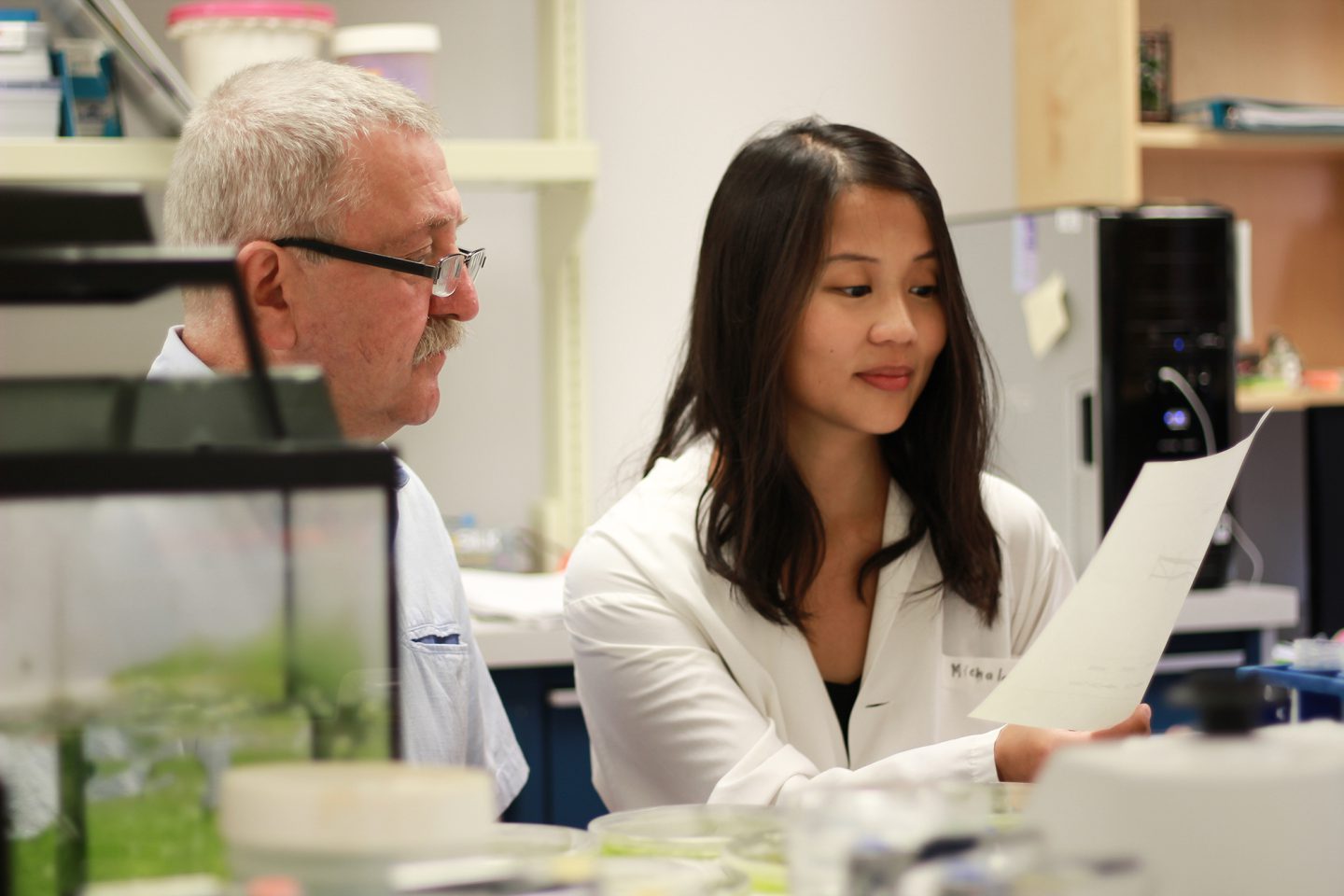
Exploration
Canadian Space Agency astronaut profiles
The men and women that have become part of Canada’s space team
- 1067 words
- 5 minutes
This article is over 5 years old and may contain outdated information.
Science & Tech

It’s long been known that calcium plays a critical role in the human body, from building strong bones and teeth to fundamental cellular functions, but scientists from the University of Alberta and McGill University have recently discovered that calcium also plays an important role in controlling lipids — fats and cholesterols — within cells. Their findings could pave the way for new insights into how cholesterol levels are controlled within the body.
“We had never expected that there would be a connection between calcium and cholesterol in such a direct way,” says Dr. Marek Michalak, a professor of biochemistry at the University of Alberta. Previously, scientists had thought that cholesterols were in charge of their own synthesis within cells, but the new study, published in Scientific Reports, revealed that calcium is a key component as well. The study was authored by graduate student Wen-An (Jennifer) Wang, along with Michalak, Luis Agellon from McGill University, and researchers from Hanyang University in Korea.
The topic piqued the researchers’ interest when they found that mice that lacked a calcium-binding protein had unusually high amounts of fats and cholesterols in their blood. “The blood actually looks pinkish, not red anymore because of the accumulation of the fats,” says Michalak. “We’ve been puzzled by that for a long time.” The researchers then looked at the effect of changing calcium levels in C. elegans, a type of worm.
The researchers discovered that changes in calcium resulted in the redistribution of cholesterols within the cell. This redistribution prevents the cellular machinery in charge of lipid synthesis from detecting already plentiful levels, and the system is then fooled into producing excessive amounts of fats and cholesterols. “Calcium could be a master of moving these lipids around the cell in such a way that it fools the synthetic machinery into making cholesterol,” explains Michalak.
He compares the system to a thermostat in a house; certain rooms away from the thermostat might be warm enough, but if the thermostat can’t detect that, it turns up the heat anyway. Changing calcium levels within the cell somehow redistributes cholesterols so that the cell’s ‘thermostat’ can’t detect the already plentiful amounts and overcompensates.
The association between calcium and cholesterol is novel, but that doesn’t mean people suffering from high cholesterol should be rushing to take calcium supplements. The relationship was studied at a cellular level, and there is much still to be understood about how this affects overall human health. “We don’t want people to start thinking that calcium is the answer to the cholesterol problem, but it is another option potentially in the future to think about,” says Michalak.
The researchers have been awarded a four-year grant worth $456,000 from the Canadian Institutes of Health Research to continue their work. The next stage will be to understand how calcium can lead to a redistribution of cholesterol at the molecular level.
Are you passionate about Canadian geography?
You can support Canadian Geographic in 3 ways:

Exploration
The men and women that have become part of Canada’s space team

History
The little-known story of the 1918 Spanish Flu and how we're preparing for the next great pandemic

Science & Tech
Courage and Passion: Canadian Women in the Natural Sciences aims to inspire young women to pursue careers in science

History
A trip back in time to the memorial’s dedication